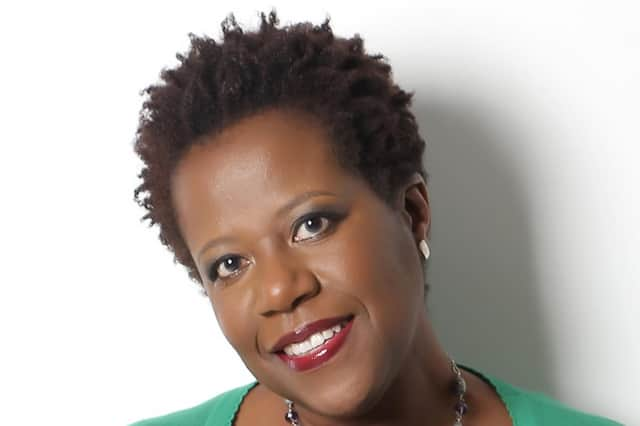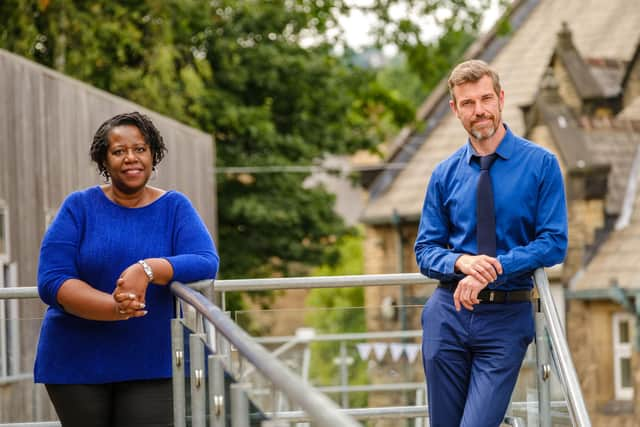How a Sheffield school is teaching pupils to manage their emotions, embrace diversity and limit bullying


My visit was twofold.
I went to talk to the children about how to manage their emotions when dealing with conflict (something I could have done with knowing when I was a pupil at the school all those years ago).
The other reason for my visit was to have my photo taken in the playground for a photographic documentary on the impact of bullying on adult life.
Advertisement
Hide AdAdvertisement
Hide Ad

This came about when I was approached by Sheffield based photographer Jeremy Abrahams who read my column last year about a childhood experience of mine.
I had written about the racist undertones of a game I played in my first year at Hunter’s Bar Junior School with three white friends.
I don’t believe their intention was racist, and I am sure they would be horrified now if they were to look back.
The game involved me having to be the maid in the game, despite me expressing the unfairness that it was always me.
Advertisement
Hide AdAdvertisement
Hide AdMy experience was a far cry from how I see the school embracing diversity and inclusion now.
Headteacher Michael Watson informed me that they had made Black Lives Matter the central focus of their curriculum for all children at the start of the year and are keen to make sure that the principles and messages from BLM weave their way through the entire school.
They want to go well beyond the typical - we do Black History Month once a year approach.
Jeremy Abraham’s project builds on research conducted by Professor Ellen Walser deLara into the impact of childhood bullying on adult life.
Advertisement
Hide AdAdvertisement
Hide AdOne of her findings was that alongside the negative impacts that persisted into adult life, such as lack of self-esteem or emotional problems, 47 per cent of the participants actually reported a positive impact of the bullying.
These positive effects were an enhanced sense of empathy for others, a commitment to treat others well and a motivation to achieve highly.
Something which resonates strongly with Jeremy who experienced anti-Semitic bullying at secondary school.
This is why his work as a photographer is so focused on positive representations of other people who may be discriminated against.
Advertisement
Hide AdAdvertisement
Hide AdThis is also behind my passion for social justice, equality and everyone having a voice.
By placing together the images and texts of a large number of people, the body of work for Jeremy’s project will say something about the singularity of each bullying experience, the commonalities in the experiences of people from similar backgrounds or situations, and the universal elements of the experience.
His plan is to exhibit the work and publish it as a book.
Having read my column last year, Jeremy asked whether I wanted to take part in his project if I considered my experience to be bullying.
Although it was uncomfortable and it didn’t feel right, I had never thought about it as being bullying because it wasn’t overt.
Advertisement
Hide AdAdvertisement
Hide AdBut the more I thought about it, the more I recognised that it was a form of bullying, and I agreed to take part in the project.
The negative effects of bullying can have a lasting psychological and emotional effect into adulthood.
Doing the work that I do coaching leaders and executives, for many of them their internal challenges have been shaped by negative childhood experiences (although these are not all necessarily related to bullying).
I have often thought that if children were taught to rationalise their irrational thoughts and beliefs, and regulate their emotions, I would see far less of the self-limiting beliefs in adults that I see in my work.
Advertisement
Hide AdAdvertisement
Hide AdSo, I was delighted to see this is an approach that Michael Watson has adopted at Hunter’s Bar Junior School.
He also told me of the Zones of Regulation they use in the school.
I since found out that this stems from the Zones of Regulation Curriculum by Leah Kuypers and is increasingly being introduced into UK schools.
It is a cognitive behaviour approach that provides a framework to foster self-regulation and emotional control.
Advertisement
Hide AdAdvertisement
Hide AdIt helps children to manage their emotions, as well as to think about how their behaviour impacts other people.
It consists of four coloured zones, namely red for anger, blue for sad, yellow for frustrated, and green for happy.
Children learn to identify what zone they are in and ways to help regulate themselves.
They also learn that their feelings and emotions can lead to expected and unexpected behaviours and that those behaviours can have an impact on people around them.
Advertisement
Hide AdAdvertisement
Hide AdZones of Regulation can help in the reduction of bullying because it provides children with tools and strategies that help them to be more self-aware of their emotions and impulses, how to manage them, and how to deal with conflict.
We increase our self-awareness through self-reflection, and I was pleased to see that at the start of the assembly before doing my talk, Michael got the children to spend a short time in quiet self-reflection.
This is something that we could all benefit from doing on a regular basis.
Reminiscing as I peeked in my old classrooms after the children had gone home, I thought to myself, how beneficial it would have been if that had been part of our learning back then.
For more opinion see pages 16 and 50.